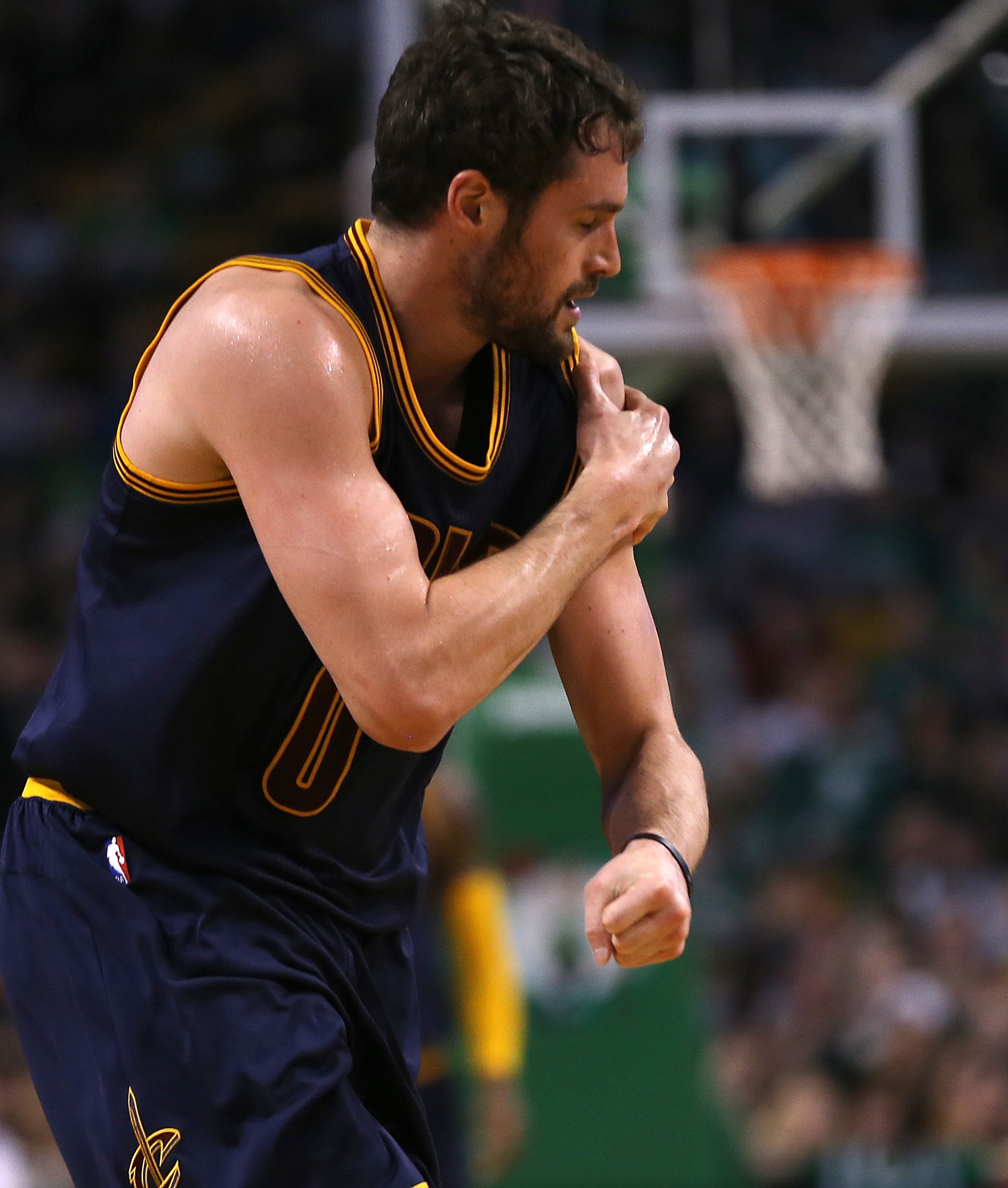NBA to promote injury prevention research, but potential impact is unclear
Despite high levels of excitement and generally solid play, the 2015 NBA Playoffs were marred by several high-profile injuries that altered several series and in many cases kept superstars out of the postseason altogether. While injuries are a part of the game and it’s likely that the Golden State Warriors would have won the championship even with every single player in the league at full health, it’s difficult to argue that a postseason without Kevin Durant (and, by extension, the healthy Russell Westbrook), Kevin Love, Kyrie Irving, and many others was not everything it could have been. The league has correctly noted that the total number of injuries was not much different this season, but the high-profile ones have created deeper concern about whether top players can stay healthy enough to participate in the games that really matter.
[Follow Dunks Don’t Lie on Tumblr: The best slams from all of basketball]
The NBA is now taking at least one step to investigate the situation. The league announced Wednesday that it has partnered with GE Healthcare to promote orthopedic and sports medicine research. From the press release:
The National Basketball Association (NBA) and GE Healthcare (NYSE: GE) today announced a collaboration to promote orthopedic and sports medicine research benefitting the health and wellness of NBA players as well as athletes of all levels across the general population. The multi-year alliance will focus on joint health and acute and overuse musculoskeletal injuries* – challenges faced by NBA players and the general population alike.
Serving to advance the prevention, diagnosis and treatment of musculoskeletal conditions among NBA players, the effort aims to promote health and wellness, reduce injuries, lengthen careers and improve post-career health for NBA players. GE and the NBA will also collaborate with additional partners, including NBA partners adidas, Kaiser Permanente, NIKE and Under Armour, to advance the research efforts. […]
This unique collaboration will be guided by a strategic advisory board made up of physicians and clinical researchers representing institutions across the U.S. who have demonstrated excellence in orthopedics, sports medicine, radiology, and related disciplines. Dr. John DiFiori, the NBA Director of Sports Medicine and a past President of the American Medical Society for Sports Medicine, will serve as the Chair of the board. Additionally, Dr. DiFiori will be joined on the board by team physicians from five NBA clubs.
The NBA and GE will also provide funding for clinical researchers working to study diagnostic and preventative techniques to identify risks for the development of orthopedic conditions. This research will contribute to a deeper understanding of overuse injuries and the resulting impact on athletes’ health and missed playing time. The findings from this research will support the work of NBA team physicians and medical staffs as they continue to provide world-class medical care in the treatment of NBA players. The NBA and GE plan to elicit research proposals later this year.
This effort is a meaningful one, although we should all probably be realistic about what it involves. Tom Haberstroh notes at ESPN.com that commissioner Adam Silver first announced plans to create such a committee and research infrastructure in late 2013, nearly two years prior to this announcement. Given that the partnership with GE Healthcare is pitched broadly as a plan to promote research and that the advisory board’s exact role has not yet been defined, it’s fair to wonder when the league will even begin to see the results of this research. It figures to be a matter of years.
In some ways, this is simply the necessary schedule for serious scientific research, which requires observable, usually quantitative data and not merely the vague impressions of pundits. But it’s also seems that an especially concerned organization could opt to play it safe and at minimum immediately decrease the number of back-to-back games as a potential means of protecting players. It’s understandable why the NBA wouldn’t want to do that, because the system they use has been successful from a business perspective and they will require evidence to make any changes to it. Yet that’s also the point — the burden of proof lies with the scientific community, not the league that has asked players to risk injury.
It’s difficult to slam the NBA for this circumstance, because anyone who watches the league without realizing its overriding business concerns practices willful ignorance. Nevertheless, initiatives like this one make that relationship much clearer. An effort to fund research is laudable, but the league is doing so as a corporate entity — even the announcement is written as a collaboration between the NBA and General Electric first and research promotion effort second — in a way that makes the goals of the project unclear. Will the league like what it sees? Will teams use these findings primarily to keep players healthy or to maximize financial efficiency?
– – – – – – –
Eric Freeman is a writer for Ball Don’t Lie on Yahoo Sports. Have a tip? Email him at [email protected] or follow him on Twitter!
